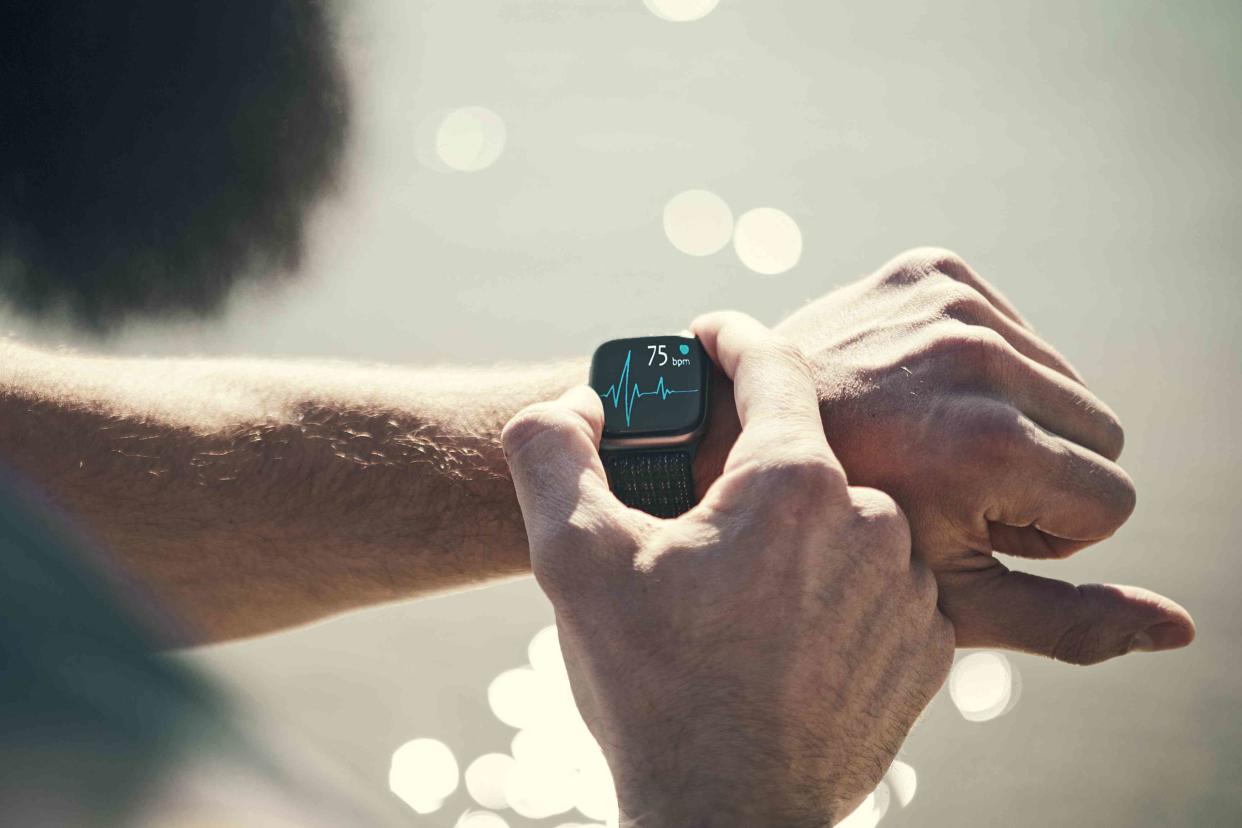Why Is AFib More Common in Younger Adults Now?

Nastasic / Getty Images
Fact checked by Nick Blackmer
Key Takeaways
New research suggests that AFib is becoming more common among younger adults.
Younger adults with AFib have an increased risk of hospitalization, heart attacks, and death compared to their peers without the heart condition.
Experts say early AFib diagnosis and treatment could lead to better outcomes.
Atrial fibrillation (AFib) is a common heart condition among older adults, but new research suggests it's increasingly affecting younger people.
Researchers examined health records of 67,221 people with AFib—or irregular heart rhythm—and found that almost 25% were under 65 years old.
“Maybe the prevalence of atrial fibrillation in the younger population is increasing much more than we recognize,” Aditya Bhonsale, MD, MHS, an assistant professor of medicine at the University of Pittsburgh and lead author of the study, told Verywell. “Having AFib at a younger age is not benign.”
AFib can lead to serious complications such as blood clots, heart failure, and stroke. The study found that younger patients with AFib are at a higher risk of hospitalization, heart attacks, and death compared to people their age without the condition.
Related: Artificially Sweetened Drinks May Increase AFib Risk by 20%, Study Finds
Why Are AFib Cases Rising in Younger People?
Obesity, high blood pressure, diabetes, and heart failure can increase the risk of developing AFib. Research suggests people with one elevated risk factor have a greater than one-in-three chance of developing AFib in their lifetime.
“The risk factors are more common than ever and we know that they’re often not treated,” said Jonathan P. Piccini, MD, MHS, a clinical cardiac electrophysiologist and professor of medicine at Duke University Medical Center and the Duke Clinical Research Institute.
The rising rates of diabetes and obesity rates among young adults over the past decade may be contributing to the rise in early-onset AFib. Advanced screening methods also help explain some of the earlier diagnoses.
“We’re getting better at identifying cardiovascular disease early, and more and more people are walking around with a heart rhythm recording device,” Piccini said.
Over 30% of Americans wear a smartwatch or fitness tracker, many of which can detect irregular heartbeats.
Related: Apple WatchOS Upgrade Features Tracking for Menstrual Cycle, AFib, and Medications
How Can Young People Reduce AFib Risk?
AFib is not entirely preventable, and the exact causes of many AFib cases remain unknown. However, certain lifestyle changes can help reduce the risk.
“Modifying risk factors really does matter,” Piccini said. “Not everyone who does everything on the list for risk factor prevention is going to be guaranteed no AFib—far from it. But there are individuals who do get risk factors treated and it dramatically reduces the amount of AFib they have.”
Maintaining a healthy weight, managing high blood pressure, cutting down on caffeine and alcohol, and eating a balanced diet may lower AFib risk. Although some extreme endurance athletes have an elevated risk of developing AFib, exercising regularly is important for reducing AFib risk and managing the condition.
Piccini noted that the current guidelines from the American Heart Association recommend a full 210 minutes of moderate-intensity exercise a week for people with AFib.
Healthcare providers can screen for AFib with physical exams or tests like an electrocardiogram (EKG). Lifestyle changes, surgery, and medications such as beta blockers and blood thinners are used to treat AFib.
Bhonsale added that getting an early diagnosis of AFib might help with treatment. “There is data that early treatment—within one year of diagnosis—has better outcomes than saying we’re going to sit on it for some period of time,” he said.
Read Next: Early Rhythm-Control Therapy May Improve Outcomes for AFib, Study Finds
What This Means For You
Recent research shows that AFib, usually common in older adults, is now more frequently diagnosed in people under 65. Factors like rising obesity and diabetes rates, plus better detection through smartwatches, play a role in the increase. Catching AFib early and making lifestyle modifications are crucial for managing this heart condition effectively.
Read the original article on Verywell Health.


